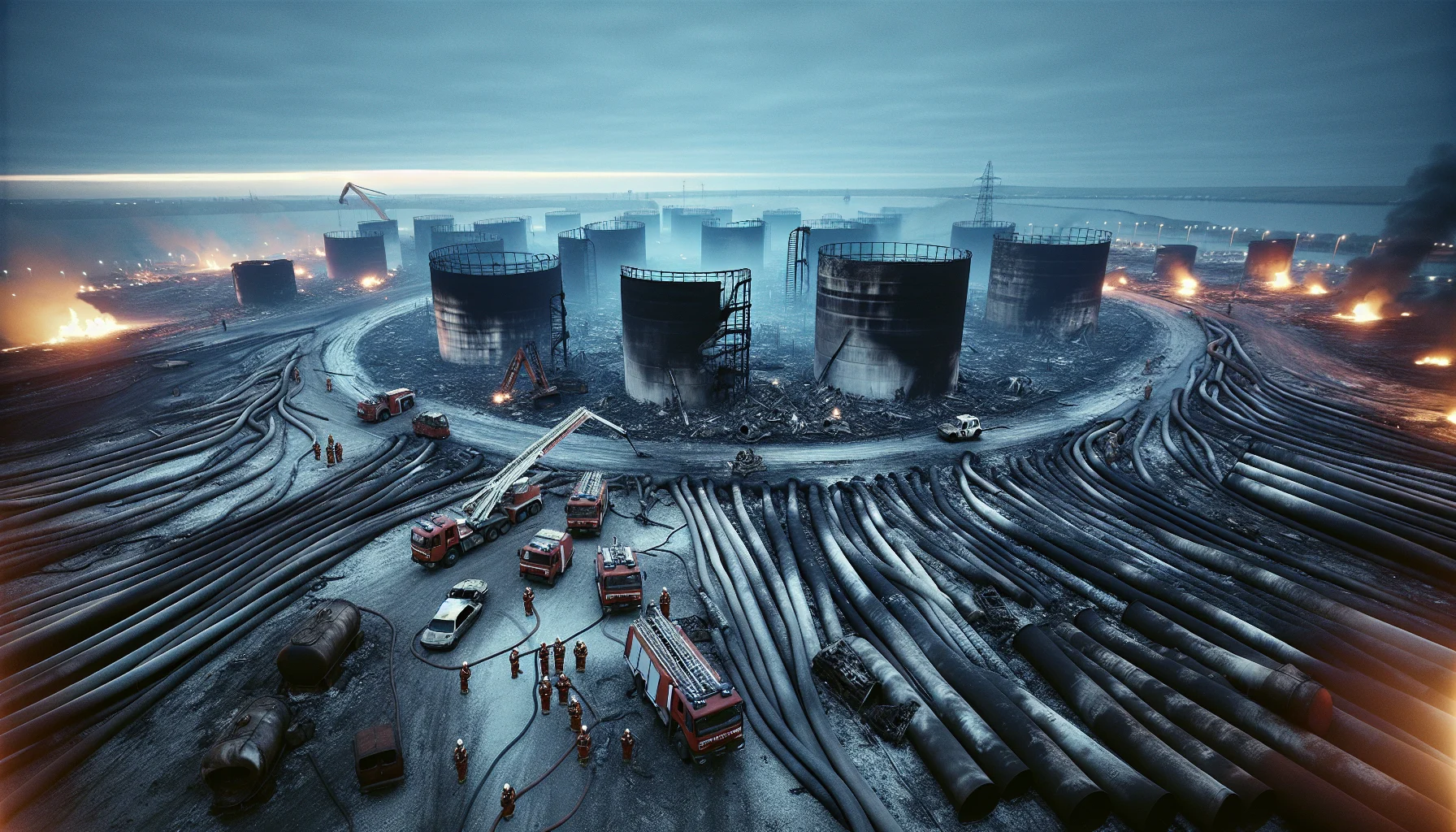
The Buncefield Fire
by: The Calamity Calendar Team
December 11, 2005
A Prelude to Catastrophe
As dawn broke on December 11, 2005, the tranquil town of Hemel Hempstead in Hertfordshire, England, lay under a sky painted with the soft hues of early morning light. In the quiet stillness, the Buncefield Oil Storage Depot, one of Europe’s largest fuel holdings, was a behemoth of silent activity. This critical nexus hummed with the invisible rhythms of industry, responsible for the lifeblood of London's bustling airports and beyond. Yet, unbeknownst to most, that morning's peace would soon shatter, leaving an indelible mark on the landscape and the people.
The Perfect Storm
The Buncefield Depot was a vast facility, handling a myriad of petroleum products for distribution. In the early hours, a crucial tank—Tank 912—silently overfilled. Monitoring systems, so vital to averting disaster, failed their purpose, allowing petrol to spill, forming a growing vapor cloud. This incident was a ticking time bomb, a sleeping giant poised on the brink of awakening.
The depot's operations were vast and precise, with a scale so grand that even a minor error could spell disaster. Despite the vigilant architecture of modern monitoring devices, human oversight and mechanical fallibility crafted a storm that no one saw brewing until it was too late.
The Morning of the Inferno
It was 5:50 AM when the overflow began—an innocuous start to what would become chaos. The mixture of fuel and air created a highly flammable vapor, hanging ominously over Buncefield like a spectral veil. At exactly 6:01 AM, the veil lifted in a single, catastrophic explosion. The sound was heard over 125 miles away, a booming shockwave resonating through the sleepy towns and into the hearts of its inhabitants. Windows shattered, walls trembled, and the world as they knew it was turned on its axis.
Fire ignited, raw and uncontained, engulfing tank after tank. The sky turned dark with smoke, its acrid tendrils weaving a scene that seemed ripped from fiction. Panic and fear gripped all who stood witness.
Rallying Against the Flames
Despite the chaos, an army rose to meet it. Over 600 firefighters from across the region converged on Buncefield, battling an elemental force with foam and valor. Their mission was to contain and extinguish the blaze before it spread beyond the depot's boundaries, posing an insurmountable threat to the surrounding communities.
Thanks for subscribing!
Under the darkened sky, they faced exploding fuel tanks and the pervasive threat of further detonations. For five days, they poured their resources and efforts, finally taming the beast that had roared to life from a simple overflow.
Picking Up Pieces
Miraculously, the inferno claimed no lives, though it left 43 injured. The depot itself bore the scars of the baptism by fire—20 tanks ravaged, infrastructures battered. As the fires died, the world began to count the cost, which reached an estimated $1 billion in damages and compensation.
Businesses, homes, and lives were disrupted in a region held in the grip of what was one of Europe’s largest fires. Air and soil bore the burden of contamination, gleaming silver against the charred remains—a testament to both the destructive nature of fire and the resilience of life.
Learning from the Past
In the wake of devastation, lessons emerged, drawn from the ashes of oversight and complacence. The Health and Safety Executive (HSE) spearheaded investigations uncovering lapses that had preceded the disaster—level gauges that failed, alarms that slumbered as chaos emerged. These inquiries paved the way for sweeping reforms, a tightening of the standards that guided the fuel industry.
Fuel storage facilities across the nation received new mandates—more robust, vigilant, unyielding in their purpose to prevent another Buncefield. Monitoring equipment was enhanced, emergency guidelines redefined. The specter of failure now stood as guardian against future neglect.
A Legacy of Change
The Buncefield Fire stands as a testament—a convergence of failure and human resolve, a narrative where no loss of life mirrored the resilience against overwhelming odds. Today, the industry it redefined walks more cautiously, its steps echoing with the lessons learned from those five fiery days.
In the years since, stricter safety protocols are the legacy left by the Buncefield incident, a lasting reminder carved in the memory of metal and man—one that ensures vigilance, foresight, and safety above all.
Stay in the Loop!
Become a Calamity Insider and get exclusive Calamity Calendar updates delivered straight to your inbox.
Thanks! You're now subscribed.